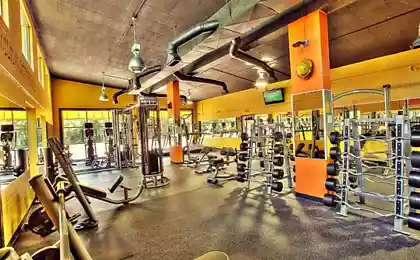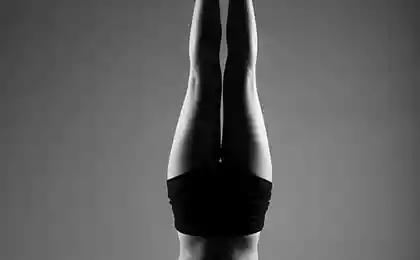265
Why Yoga Can Make You Not Only Flexible, But Strong

Many people see yoga as a practice to develop flexibility and relaxation. Stretched figures on the mat, meditative poses and deep breathing are what most often come to mind when mentioning yoga. However, this ancient teaching is much more multifaceted than it may seem at first glance. Modern research confirms what yoga masters have known for thousands of years: regular practice can not only make you more flexible, but also significantly strengthen your body and spirit.
Breaking Myths: Yoga and Power
The stereotype that yoga is just stretching and meditation for people who avoid intense exertion has nothing to do with reality. True yoga practice is an integral system of physical and mental development, where strength plays no less important role than flexibility.
The Physiological Basis of Power in Yoga
When we talk about strength in the context of yoga, we need to understand that it manifests itself differently than in traditional strength training. Yogic strength is based on the principles of isometric tension, concentration and control of one’s own weight.
According to a study published in the Journal of Strength and Conditioning Research, regular practice of strength yoga asanas leads to a significant increase in muscle strength and endurance, comparable to the results of moderate strength training. Yoga has the unique advantage of developing strength evenly throughout the body, focusing on often-ignored muscle groups.
Key strength aspects of yoga practice:
- Functional force Ability to use your body effectively in everyday activities
- Stabilization of the hull Development of deep muscles of the abdomen, back and pelvis
- Balance and coordination Stability and control during difficult body positions
- Strength endurance Ability to hold postures requiring significant tension for a long time
- Concentrated force The ability to direct energy and tension to specific areas of the body
Asanas that develop power: from basic to advanced
Many classical yoga asanas require significant strength costs and can be an effective alternative to traditional strength training. This is especially true for postures in which you have to keep your body weight in unusual positions.

Top 5 Asanas for Physical Strength Development:
- Chaturanga Dandasana (The Staff Pose) - develops the strength of the hands, shoulders, backs and press, similar to classical push-ups, but with greater stabilization of the body
- Nawasana (Boat Pose) intensively strengthens the muscles of the cortex, thighs and lower back
- Ardha Chandrasana (Crescent Pose) Develops leg strength, balance and body stability
- Utkatasana (Stool Pose) - powerfully loads quadriceps, buttocks and back
- Adho Mukha Vrikshasana (Standing on the Hands) Complexly develops the strength of the upper body, the cortex and helps to redistribute the load
Studies show that long-term retention of asanas in a static position creates muscle tension, leading to microtraumas of muscle fibers - the same process that occurs during strength training and stimulates the growth of muscle mass and strength.
Lifehack: For maximum strength development in yoga, increase the retention time of postures and concentrate on proper muscle activation. Five minutes of conscious practice with full concentration on working muscle groups can give a better result than half an hour of mechanical asanas.
Mental Strength: The Invisible Part of Yoga
Physical strength is only one aspect of yogic practice. Considerable attention is paid to the development of mental strength, endurance of consciousness and the ability to overcome internal barriers.
According to research by neuroscientists from Harvard University, regular yoga practice changes the structure of the brain in such a way that increases the ability to concentrate, improves emotional regulation and reduces susceptibility to stress - all components of mental strength.
How Yoga Strengthens Mental Strength
- The practice of overcoming discomfort Holding complex asanas despite the desire to leave the posture teaches you to endure unpleasant sensations and find an internal resource
- Development of concentration The need to pay attention to breathing and sensations in the body strengthens the ability to concentrate
- Emotional resilience Pranayama techniques help control emotional responses and manage stress
- Integration of body and consciousness Synchronization of movement and breathing creates a sense of integrity and increases self-confidence
Notably, even simple breathing practices such as Ujayi Pranayama and Kapalabhati can significantly increase a person’s psychological resilience to stressful situations, as confirmed by research published in the journal Frontiers in Psychiatry.
“Yoga gives us the power not only to hold our bodies in difficult positions, but also to control our thoughts in difficult situations. This is the true strength of the spirit. - B.K.S. Iyengar.
Practical recommendations for the development of strength through yoga
In order to maximize the use of yoga for the development of physical and mental strength, it is important to competently build your practice taking into account several key principles.

Tips for integrating power elements into yoga practice:
- Turn on the vinyas. Dynamic sequences of asanas, such as Surya Namaskar (Sun Salutation), develop strength endurance and work out all major muscle groups
- Use the principle of progressive load increase Gradually increase posture retention time or move on to more complex asana variations
- Practice regularly Studies show that 3-4 yoga sessions per week for 8 weeks lead to a noticeable increase in strength indicators.
- Combine different styles of yoga Ashtanga and Power Yoga focus on strength development, while Hatha Yoga focuses more on alignment and balance.
- Don't ignore recovery Incorporate rehabilitation sequences and shavasana into practice for effective recovery.
Lifehack for beginners: If you’re just starting a yoga practice for the purpose of developing strength, try first mastering modifications of basic support asanas (using walls, blocks, or belts). This will allow you to properly build the body and feel the work of the target muscles before moving on to full versions of poses.
Scientific Perspective: Measurable Results of Yoga for Strength Development
In recent decades, there has been an increase in scientific research on the effects of yoga on the physical parameters of the body. The results clearly confirm the effectiveness of regular practice for the development of strength indicators.
According to a meta-analysis published in the International Journal of Yoga Therapy, including data from 12 independent studies, regular yoga practice for 8-12 weeks leads to an increase in muscle strength by 12-35% depending on baseline and intensity of training.
Proven effects of yoga for physical strength:
- Increased muscle strength of the upper extremities by 19-31%
- Increased strength endurance of muscles of the cortex by 24-40%
- Improve balance and stability by 17-45%
- Strengthen muscle stabilizers by 15-28%
- Reducing the risk of musculoskeletal injuries by 35-60%
It is especially important to note that yoga effectively develops not only “external” muscles, but also deep stabilizing muscle groups, which often remain underdeveloped in traditional strength training.
Strength and flexibility are two sides of the same coin
Yoga is a unique balance between developing flexibility and strength. Unlike many other fitness disciplines, here these qualities are not opposed, but harmoniously complement each other. Strong muscles provide safe deep stretching, and a flexible body allows you to use the available strength more effectively.
Regular yoga practice not only transforms your body, making it both strong and flexible, but also strengthens your spirit, developing mental stamina and emotional resilience. This complex influence makes yoga one of the most effective practices for the harmonious development of a person in the modern world.
Regardless of your fitness level, you can start practicing yoga with an emphasis on strength development at any age. The main thing is regularity, awareness and proper technical execution of asanas. And remember, true strength lies not only in the ability to lift a heavy weight, but also in the ability to control your body and mind in all circumstances.
Glossary
asana
Physical posture in yoga, performed for a specific purpose and in accordance with the principles of alignment of the body.
pranayama
A complex of breathing techniques in yoga aimed at controlling the energy (prana) in the body through the control of breathing.
vinyasa
A sequence of asanas connected by smooth transitions into a single dynamic complex synchronized with breathing.
Ujjayi pranayama
Breathing technique with partial compression of the vocal slit, creating a characteristic noise when breathing and helping concentration.
kapalabhati
Active breathing practice of the “shining skull”, including forced exhalations and passive breaths, aimed at cleansing and energizing the body.
cor
Muscle corset of the central part of the body, including the muscles of the abdomen, back, diaphragm and pelvis, ensuring the stability of the spine.
Isometric voltage
A type of muscle contraction in which the length of the muscle does not change, but its tension increases, which is characteristic of holding static poses in yoga.
shavasana
Deep relaxation ("cadaver posture"), aimed at restoring energy and integrating the effects of the practice.
14 Little Things That Matter for a Happy Relationship
The Internet is dead, long live the Internet: why the usual web will soon disappear























